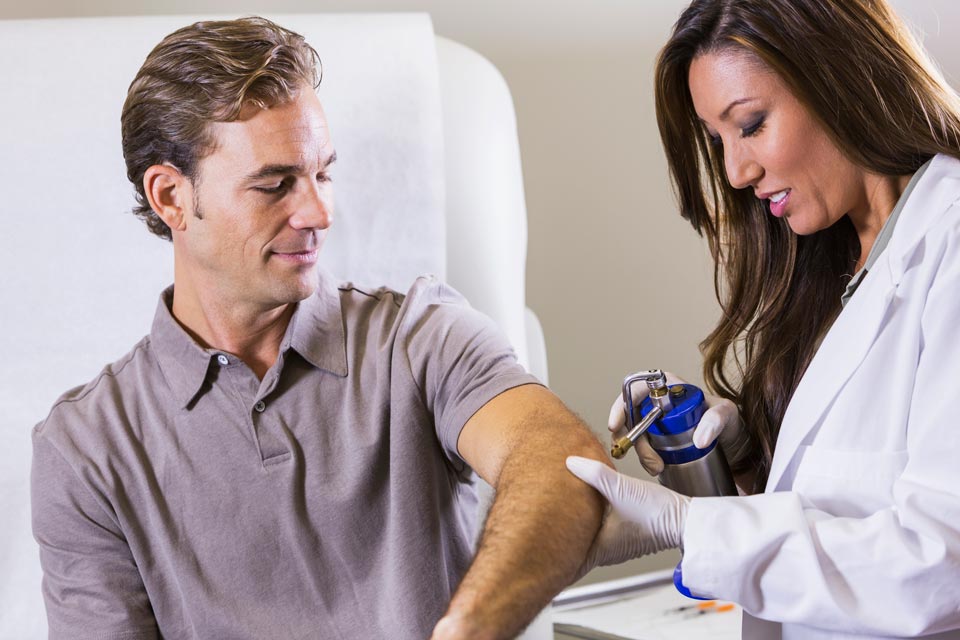Cryotherapy for Keloid Scars

Cryotherapy is also called cryosurgery, and is typically done in the doctor’s office.8 The commonly used contact or spray methods are best used on small keloids (e.g., from acne).17 However, a newer intralesional process which applies the liquid nitrogen inside the keloid may prove to be very useful in larger keloids.30
Cryotherapy is considered a first-line treatment option, whether by itself or in combination with other therapies.17 Administered prior to steroid injections cryotherapy can soften tough keloids, make the injections easier, and help disperse the corticosteroid drug better.8,21
| CRYOTHERAPY TREATMENT DETAILS | |
|---|---|
| What Happens During Treatment |
Contact Cryotherapy:
Cryospray:
Intralesional Cryosurgery:8
|
| Other Things to Expect Before and After Treatment | Local anesthesia is typically not used if you have contact or spray cryotherapy.8 If keloids are still unresponsive after six treatment sessions, experts suggest that results may be achieved if cryotherapy is combined with corticosteroid injections.31 |
| How Often | Varies; treatment sessions are typically repeated if necessary every 20-30 days.3 |
| Typical Dosage | Typically between 1-3 freeze-thaw cycles at 10-30 seconds at a time.up3 The number of cycles depends on how deep the scar is.8 |
| Is it Painful? | Yes.3,17 In fact, patients often do not continue with subsequent treatments due to pain.16 |
| Side Effects | Swelling and blistering may occur right after cryotherapy. Temporary darkening of the skin may happen in the months after the procedure. Hypopigmentation can occur and may be permanent, especially on patients with darker skin tones. Cryotherapy on forehead and temple keloids can cause headaches.8,16 |
How Does Cryotherapy Work?
Cryotherapy directly damages cell tissue and causes the scar tissue to flatten and slough off.8 When used in combination with steroid injections, only a light application is applied to soften up the tough keloid scar tissue by causing mild swelling.16
Melanocytes, the cells that produce skin pigments, are located more at the surface of the skin and are sensitive to extreme cold temperatures. The intralesional method has been shown to result in more moderate but longer lasting temperature reductions. Contrasting with contact and spray therapies, with this method the tissue area that gets the coldest is inside the scar, further away from the scar surface and is less likely to kill off melanocytes.30
Evidence of Benefit
Cryotherapy rates of response are good when used by itself, especially in recently formed keloids.31 It is much more effective when combined with steroid injections.
Intralesional cryosurgery may be a viable solution to the risk of hypopigmentation associated with contact or spray cryotherapy.21 Hypopigmentation can be a permanent adverse side effect, so any reduction in this risk is important and may make cryotherapy an even more attractive treatment option since it has a zero rate of keloid recurrence.3,8,17
In a clinical study involving 30 Caucasian patients, none of keloids treated with intralesional cryosurgery evaluated after six months developed hypopigmentation, but 92% of those treated with the contact probe showed significant hypopigmentation. Although only Caucasian patients participated in this study, the researchers also mentioned that unpublished data indicates less incidence of hypopigmentation in people with darker skin with intralesional cryosurgery.30
from three separate universities.

